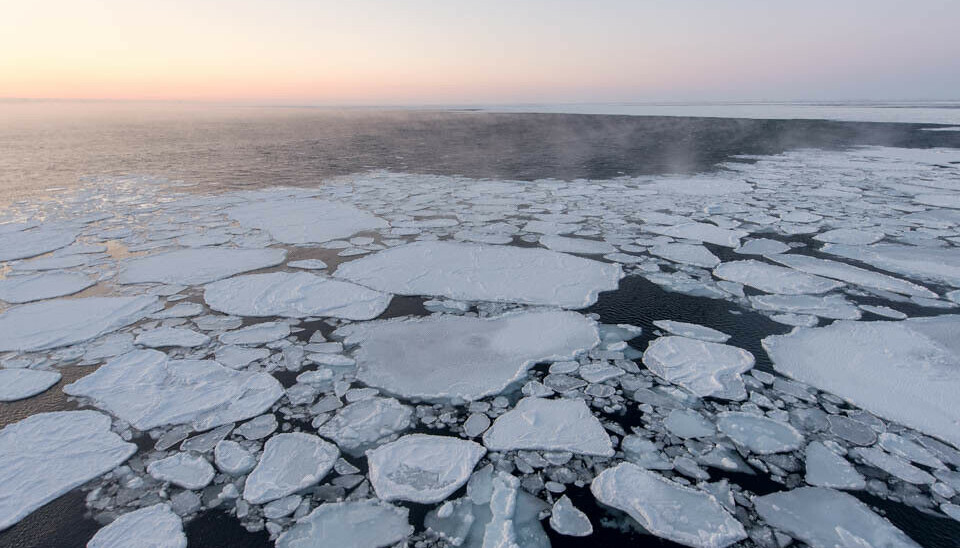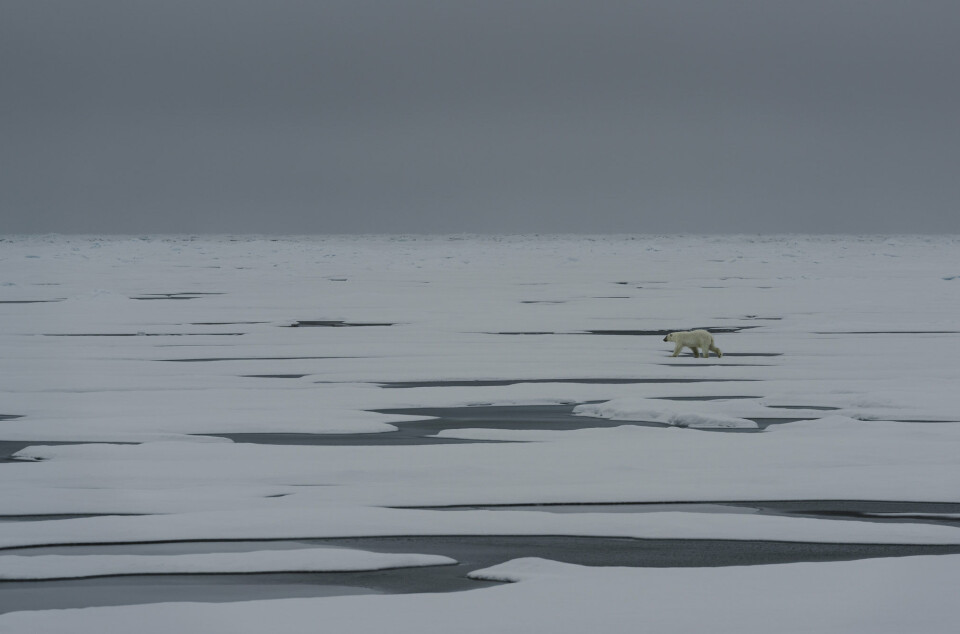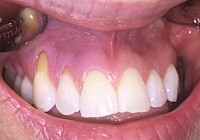
New study: The northern Barents Sea could be seven degrees warmer in 2050
The Barents Sea is heading toward an ice-free future, researchers report.
The Barents Sea, located north of Norway, is one of the ocean areas most affected by climate change.
The northern part of this sea area remains ice-covered much of the year, supporting seals, polar bears, seabirds, Arctic fish, and various small marine creatures.
The changes now observed in this Arctic region are largely the result of greenhouse gas emissions up until the 1990s, explains Tor Eldevik, head of the Geophysical Institute at the University of Bergen.
Greater changes are expected by 2050.

Looked at two future scenarios – both had the same outcome in 2050
"There's a lag in the system, meaning that the actions we take now will only have consequences in 20 to 30 years," says Marit Reigstad, professor of marine ecology at UiT The Arctic University of Norway.
The two led a project, The Nansen Legacy, which focused on the Barents Sea, among other areas. The researchers explored two future scenarios.
- One was very pessimistic, predicting a global warming of over four degrees by 2100.
- The other was more moderate, with a global warming of around 2.5 degrees.
"One of the main findings is that you can't see a difference between these scenarios in 2050," says Marius Årthun.
He is a researcher at the Bjerknes Centre for Climate Research and the University of Bergen, who led the work on the future Barents Sea.
"Changes are already locked into the system," he says.

Seven degrees warmer in the air
There is a divide in the Barents Sea between a more Atlantic-dominated area in the south and an Arctic area in the north, which has sea ice in winter.
The biggest change will be in the north by 2050, says Årthun.
In both scenarios, the projections are:
- A seven-degree increase in atmospheric temperature in the northern Barents Sea.
- A 3.5-degree increase in sea temperature.
"That's a lot," says Årthun.

Losing the ice
This may mean that there will be no ice on the Barents Sea in winter, according to Årthun.
“It would be a very marked difference,” he says.
From having seasonal ice cover, it will shift to nearly no ice at all.
"It goes from being an Arctic domain to resembling the Norwegian Sea," he says.
With the ice disappearing, more light will penetrate the water.
Studies indicate that the Barents Sea will likely be the first shallow sea area in the Arctic without winter ice, says Reigstad.
More plankton
Researchers also expect that more phytoplankton will form in the northern sea area by 2050.
"As the ice retreats, you get more light, and the surface becomes warmer," he says.
Spring is expected to arrive a month earlier, which is when phytoplankton blooms.
With the ice retreating and more CO2 in the atmosphere, ocean acidification increases.
Larger habitat for fish
"The Atlantic cod we eat will move into the ice-free domain and find a larger food supply," says Årthun.
Researchers estimate that fish stocks in the south will generally move about 50 kilometres northeast.
This could alter the dynamics among different fish species, says Årthun. It involves competition and who eats what.
The spawning area for cod will likely shift further north along the Norwegian coast.
Two pathways to 2100
By 2100, the path diverges. The climate in the Barents Sea in 2100 will depend on which emissions scenario becomes a reality.
The scenario with global warming of four to five degrees is considered too extreme to be likely. It represents a worst-case scenario.
With such emissions, the air temperature near the Barents Sea would rise by 12 degrees, and water temperatures by 7 degrees.
The polar cod, an Arctic fish species, would be reduced by 90 per cent. It is an important food source for cod, seals, whales, and seabirds in the Arctic.
There would be a massive increase in ocean acidification, which would be dramatic, explains Eldevik.
"With a pH reduction of half a unit, we are far beyond natural contrasts, and there's concern it could exceed the ecosystem's tolerance," he says.
More moderate scenario – also concerning
In the more moderate climate scenario, with 2.5 degrees of global warming, the pH is reduced by about half comared to the worst-case scenario. This is also concerning and far beyond the ocean acidification we have observed so far, says Eldevik.
In this scenario, sea temperature rises by about four degrees.
Fish are expected to move on average around 40 kilometres northeast, and phytoplankton production will increase somewhat.
———
Translated by Alette Bjordal Gjellesvik
Read the Norwegian version of this article on forskning.no
References:
Fact sheet with summary results.
The study has been submitted to the journal Elementa: Science of the Anthropocene, but is not yet published.
Related content:

Subscribe to our newsletter
The latest news from Science Norway, sent twice a week and completely free.






































